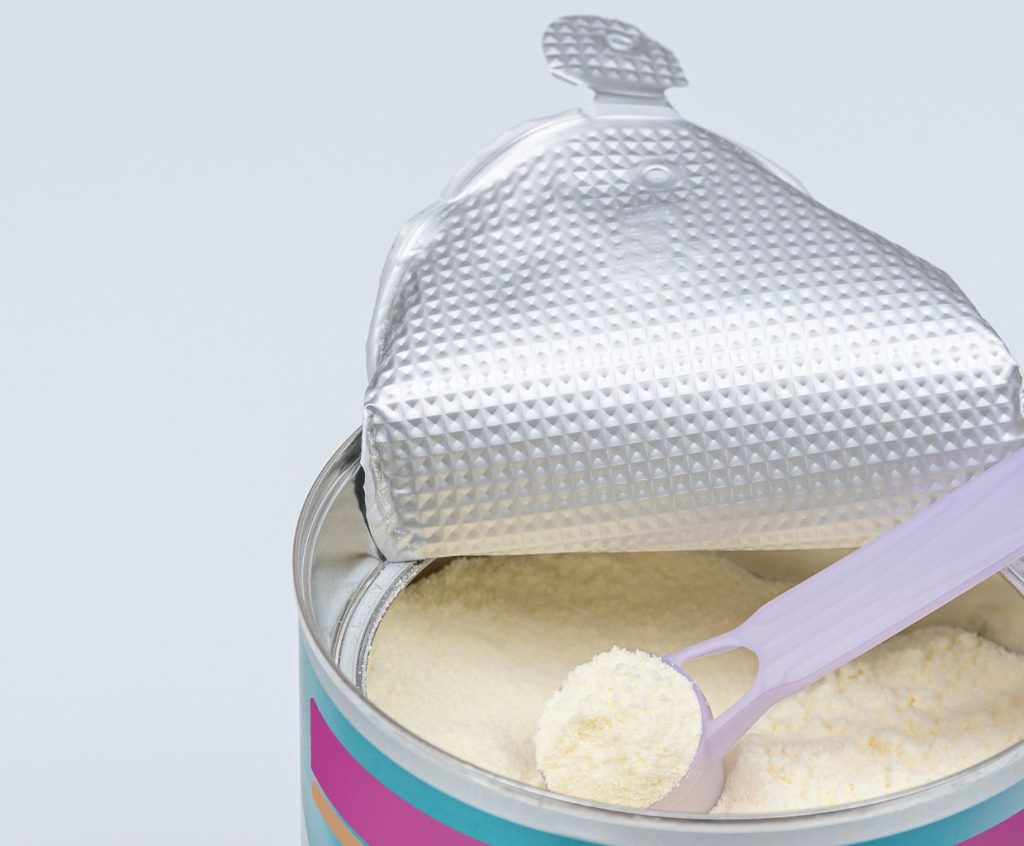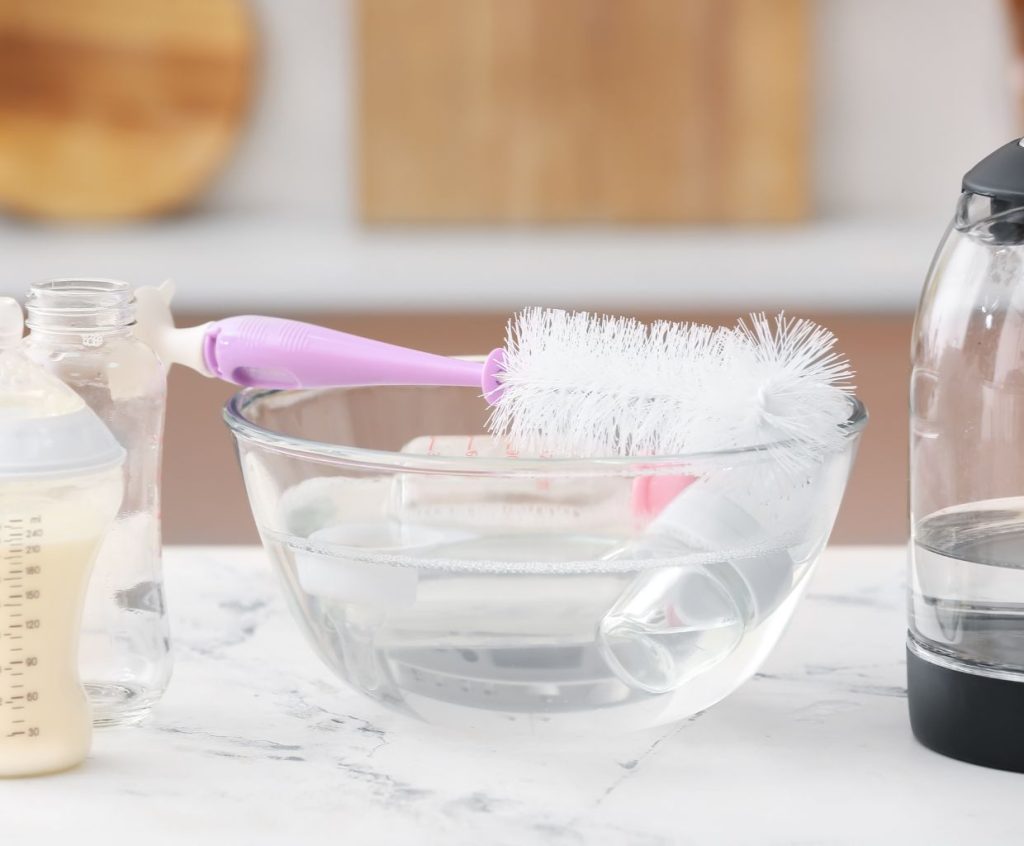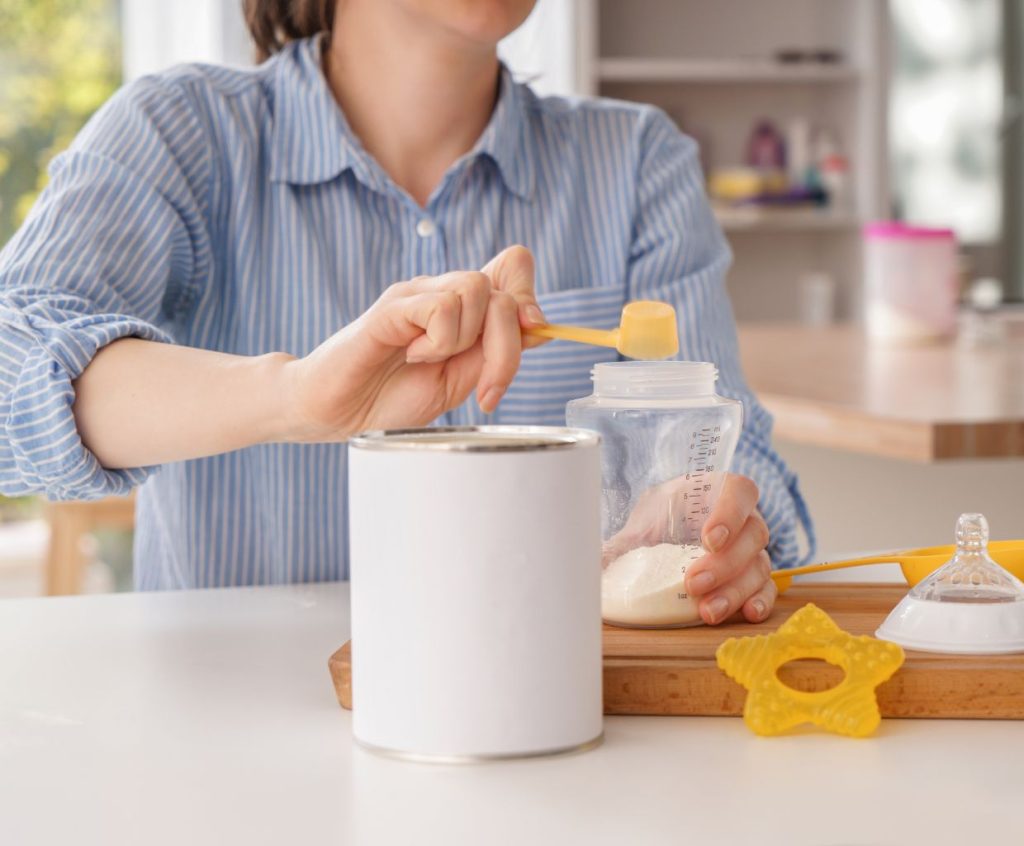6 Baby Formula Safety Tips You Need to Know
Baby formula is a great way to ensure your Baby gets all the nutrients they need, but it’s important to remember that there are some things you should keep in mind when preparing, storing, and using it. In my household, I was in charge of breastfeeding, while my husband was in charge of formula feeding. Until one day, he went on a business trip, and I had to prepare the Formula. Oh my God! The work involved!
If I were to give you one piece of advice, it would be this: get the Formula prepared before Baby is screaming with hunger. Now, check the rest of the information that I learned the hard way.

6 Baby formula safety tips – #1 Opening a Can of Formula
Sounds easy. But here are some baby formula safety tips you should be aware of:
You should wipe, rinse, or wash the top of the can before you open it so that dust & dirt from the top of the container do not fall into the Formula. Baby formula is very rich in nutrients, so any germs that fall in will quickly multiply and ruin the entire batch.
For powdered Formula, always use the scoop provided in the canister. The scoop is designed to measure the proper amount of Formula for the designated amount of water. Most scoops are for 2 ounces of water – read the label to be sure. Always mix the Formula with the correct amount of water. If you use too much water, the Baby won’t get enough nutrients & energy to grow and develop. If you give too little water, it may cause diarrhea or dehydration.
For liquid formulas, shake the container well before using it.
6 Baby formula safety tips – #2 How to Wash & Sterilize Baby Bottles
- Wash your hands with soap and warm water.
- Scrub the bottles, nipples, collars, and caps with soap and warm water.
- Rinse well and allow them to drain dry on a dish rack.
- Alternatively, you can wash the baby bottles and accessories in a dishwasher with a hot water cycle. Be sure that the nipples and collars are clean – these parts tend to have Formula encrusted in the screw-top grooves.
Fifty years ago, moms had to sterilize baby bottles and water. But now that we are in the 21st century, do we still need to do this? Here’s the current scoop:
Baby formula should be made with sterile components for premature babies and newborns. This is to say that the bottles, collars, nipples, caps, and water should be sterilized before use. Killing the bacteria by sterilization will prevent the introduction of germs to babies. Keeping the bottles & water sterile will also help keep the Formula fresh longer. Continuing sterilizing the bottles and water may or may not be necessary for older babies.
The World Health Organization (WHO) recommends that powdered baby formula should always be made with sterilized components (including water) regardless of the Baby’s age (see this article for details). If you use water from a well, or the water from your city is not treated, you should sterilize the bottles & water before using it to make Formula.
Some families find that clean bottles and water are sufficient in a city where the water is treated. Their Baby seems happy and healthy when water is used directly from the tap (use cold water and let it run for about 2 minutes before you use it – this may decrease the chances of lead in the water).
Ultimately, the question of “sterilize or not?” is similar to: “wash my hands before I eat?” The answer is that you should; however, not everyone does. Check with your pediatrician to be sure.
6 Baby formula safety tips – #3: Sterilizing baby bottles and water:
Boiling Water Method:
Boil a large pot of water. Place the clean bottles, nipples, collars, and caps in the pot and continue to boil for 5 to 10 minutes. Remove the sterile items with tongs. Cap the bottles: They are sterile and ready to use.
Sterilization Units:
You can buy units that sterilize baby bottle components by steam or microwave. These units are fast, convenient, easy to use, and work well.
- See Sterilization Units Here
No products found.
You load the clean baby bottles into the dome-shaped unit, add some water to the unit’s base, and then microwave for a set amount of time (2 to 4 minutes). To sterilize water, boil it for one minute or longer. Once cooled, the sterile water can be used to make the Formula.
Baby formula safety tips – #4: How to Prepare Formula
General instructions on making baby formula are presented here, but you should read the directions on the formula container to be sure.
Making Formula from powder
- Wash your hands with soap and warm water.
- Fill a clean baby bottle with the desired amount of water (be sure to add the water before you add the powder).
- Use the scoop in the formula canister to scoop formula powder into the baby bottle. Be sure to use a level scoop and not a heaping scoop. Usually, you need one scoop for every 2 ounces of water.
- Shake to mix. Ensure the powder is completely dissolved before you offer it to the Baby.
Making Formula from Concentrate
- Wash your hands with soap and warm water.
- Fill a clean baby bottle with the desired amount of water.
- Add the correct amount of concentrate. Usually, you need one ounce of water for every ounce of concentrate.
- Shake to mix – “shaking” is an art: you want to shake the bottle to mix and dissolve the powder. Yet, shaking too much will cause bubbles … which will cause gas… which will cause crying & fussiness… which may cause spit-up and vomiting. One way to avoid a gassy, fussy baby is to let the Formula sit so the bubbles burst before you use it. (Remember what I said? Prepare Formula before Baby is screaming with hunger).
6 Baby formula safety tips – #5: How to Warm up Formula
All babies will drink warm Formula. Most babies will drink room-temperature Formula (not warm, but not cold). Some older babies will drink refrigerator-cold Formula (it’s like drinking a glass of cold milk). If you wanted to or needed to warm up the Formula, you should do so by:
- Place the bottle of Formula in a pot of hot (not boiling) water.
- Swirl the Formula around to help warm it through. The Formula is ready when it feels warm (not hot) on your forearm.
- Place the bottle of Formula under a running faucet of hot water – again, swirl the Formula to maintain evenness in temperature and check that it doesn’t get too hot.
- You can buy baby formula warmers. These compact, plug-in devices will warm the bottle evenly without overheating. Some have adaptors so that they can be plugged into the cigarette lighter of a car. See baby formula warmers here.
- It is recommended that you do NOT heat Formula with a microwave because microwaves cause uneven heating. Some regions are hotter, while others are not hot enough. The hot spots can burn the Baby’s mouth (and babies are so delicate).
- Microwaves are so prevalent and convenient that many parents (myself included!) heat formula with a microwave. If you do use a microwave to heat the Formula, remember:
– only microwave for a few seconds (30 seconds or so), and
– invert the bottle many times to mix it thoroughly before offering it to Baby.
There’s a lot of talk about microwaves destroying the nutrients in Formula. But that’s not true. Research has shown that heating baby formula in a microwave does not cause a significant loss of riboflavin or vitamin C. The key is to WARM the Formula; don’t BOIL the Formula. Boiling will likely destroy the vitamins, but that will happen regardless if you use a microwave or stovetop.
Please note: Do not heat breast milk in a microwave because the hot spots will destroy the antibodies and enzymes. Antibodies and enzymes are active proteins, and they are heat-sensitive. Go here to read about warming breast milk.
- See Bottle Warmers Here
No products found.
6 Baby formula safety tips – #6: How Long Does Formula Stay Fresh?
You should check the manufacturer’s instructions to be sure, but generally:
- Ready-to-serve Formula and Formula made from concentrate will stay fresh in the refrigerator for 48 hours. Formula made from powder will stay fresh in the refrigerator for 24 hours. Because of the nature of powdered formulas, they cannot be sterilized entirely before they leave the manufacturer’s factory. The small amount of bacteria in the powder may multiply after being dissolved in water, so it is best to use it within 24 hours.
- Freshly made Formula can be left at room temperature for an hour. After that, discarding it and making a new batch is best.
After the Baby is complete, the Formula left over in the bottle should be thrown away. The bacteria in Baby’s mouth will have gotten into the remaining Formula. It is far better to discard a few ounces of Formula instead of having your baby vomiting or suffering from diarrhea.
- Read also: Why can’t I use Formula after 48 hours?


